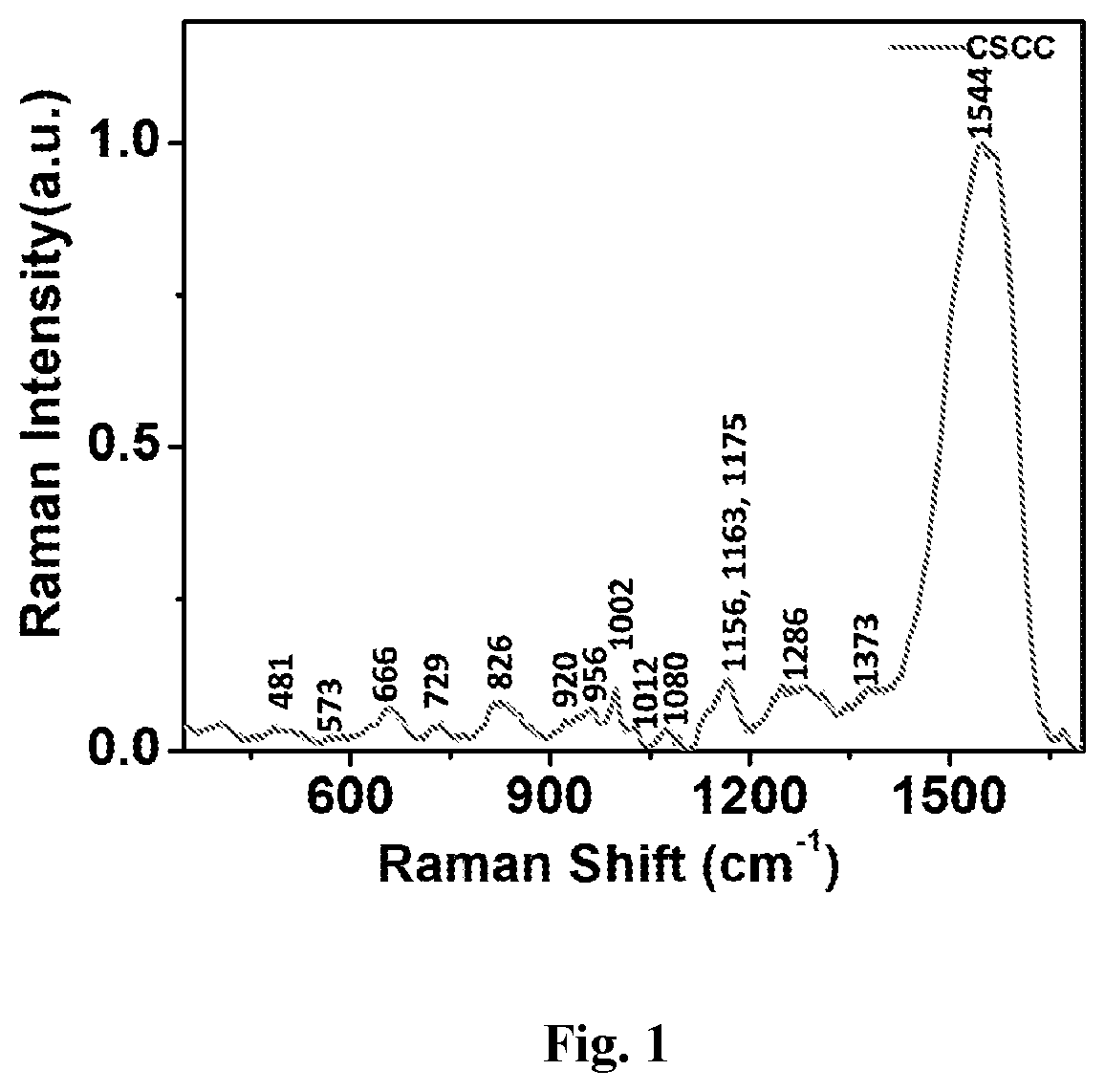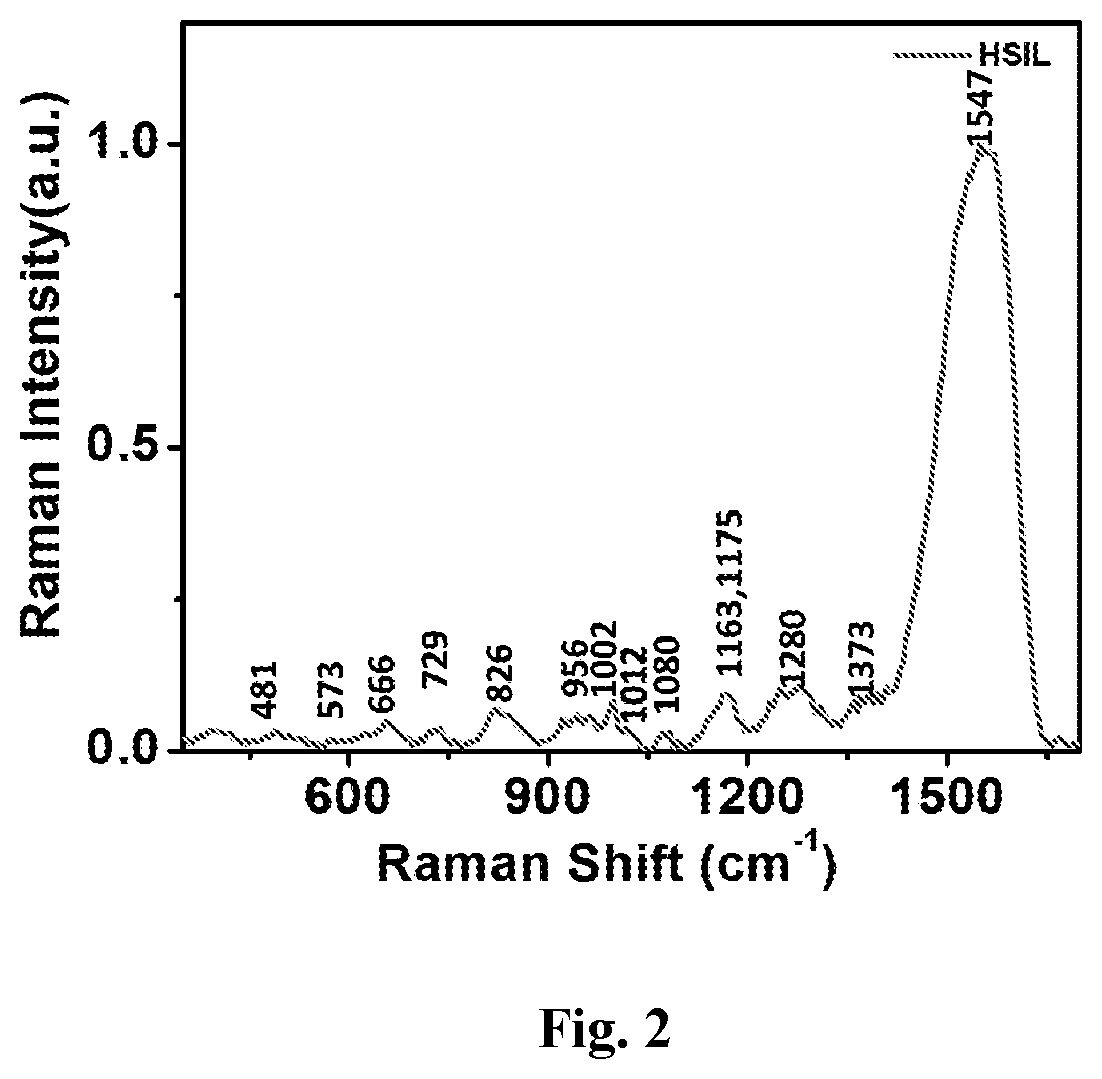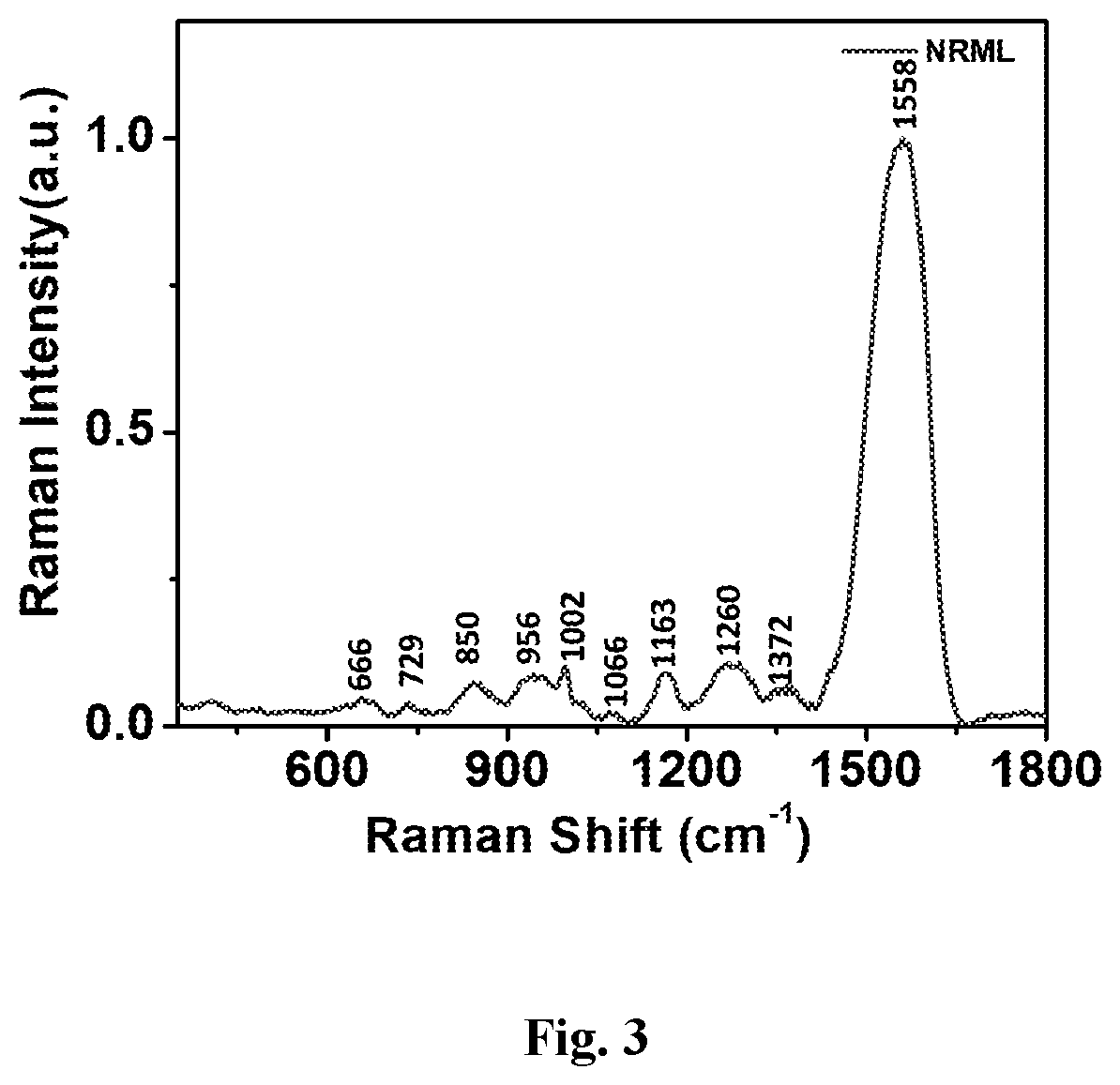Screening kit for detection of grades of cervical cancer and process for the preparation thereof
a screening kit and cervical cancer technology, applied in the direction of material analysis, instruments, measurement devices, etc., can solve the problems of inability to train cytologists for microscopic analysis of pap smears, inability to provide skilled cytotechnologists, and extraordinary toll of cervical cancer on the lives of women, etc., to achieve great potential
- Summary
- Abstract
- Description
- Claims
- Application Information
AI Technical Summary
Benefits of technology
Problems solved by technology
Method used
Image
Examples
examples
[0045]The following examples are given by way of illustration of the present invention and therefore should not be construed to limit the scope of the present invention.
example-1
Preparation of SERS Based Screening Kit:
[0046](i) Synthesis and Optimization of the concentration of Gold Nanoparticle (AuNPs) for label free detection.[0047]Gold nanoparticles (AuNPs, size around 40-50 nm) was prepared by well-established citrate reduction method. The characterization of the synthesized nanoparticles were performed through UV-vis spectroscopy, Dynamic Light Scattering (DLS) and High Resolution Transmission Electron Microscopy (HRTEM). The size was approximately 40-50 nm which serves as an optimal performing SERS substrate.[0048](ii) Optimum concentration of AuNPs which will provide maximum Raman signal intensity; Optimum concentration has been evaluated (AuNPs 8 to 10×1013 particles / ml) which provided the maximum SERS intensity.[0049](iii) A preservative fluid was prepared for preservation and fixation of the sample collected comprising of >50% Ethanol, Methanol, Isopropanol, Formaldehyde, Saline solution, Di-potassium hydrogen phosphate.[0050](iv) A density gradie...
example-2
[0053]SERS Fingerprint from Exfoliated Cells
[0054]The exfoliated cell samples were collected in the preservative solution comprising of >50% Ethanol, Methanol, Isopropanol, Formaldehyde, Saline solution, Di-potassium hydrogen phosphate. Density gradient centrifugation was performed using sucrose as gradient solution to enrich the epithelial cells in the cervical smear samples. The pellet obtained was resuspended in the PBS buffer comprising Sodium Chloride, Potassium Chloride, Disodium phosphate, Potassium dihydrogen phosphate. The resuspended solution was dropped in the glass slide coated with Poly L-lysine, APES [(3-Aminopropyl) triethoxy silane. After 10-30 minutes incubation, the excess fluid is discarded and the slide is stored in absolute ethanol till SERS measurement. Single cell has been focused bright field and spectra have been taken from different fields of the cell. A number of spectra have been taken from random locations of the cells and also from nucleus after morphol...
PUM
| Property | Measurement | Unit |
|---|---|---|
| size | aaaaa | aaaaa |
| power | aaaaa | aaaaa |
| integration time | aaaaa | aaaaa |
Abstract
Description
Claims
Application Information
 Login to View More
Login to View More - R&D
- Intellectual Property
- Life Sciences
- Materials
- Tech Scout
- Unparalleled Data Quality
- Higher Quality Content
- 60% Fewer Hallucinations
Browse by: Latest US Patents, China's latest patents, Technical Efficacy Thesaurus, Application Domain, Technology Topic, Popular Technical Reports.
© 2025 PatSnap. All rights reserved.Legal|Privacy policy|Modern Slavery Act Transparency Statement|Sitemap|About US| Contact US: help@patsnap.com



